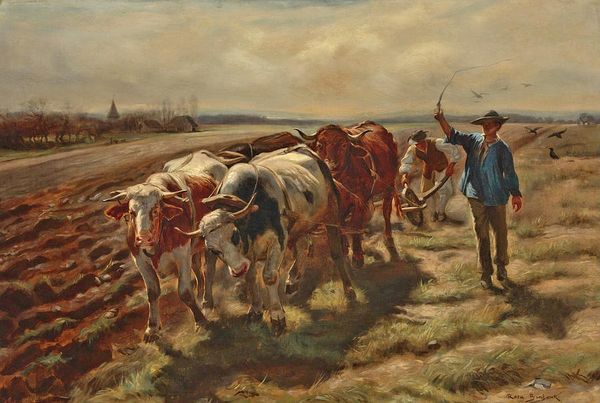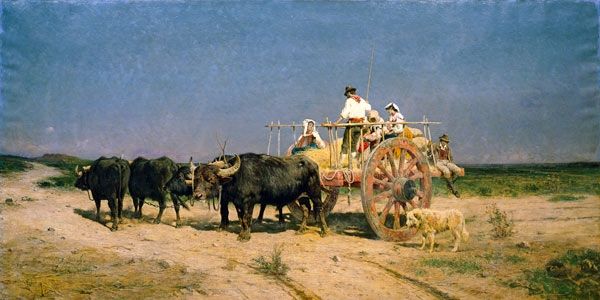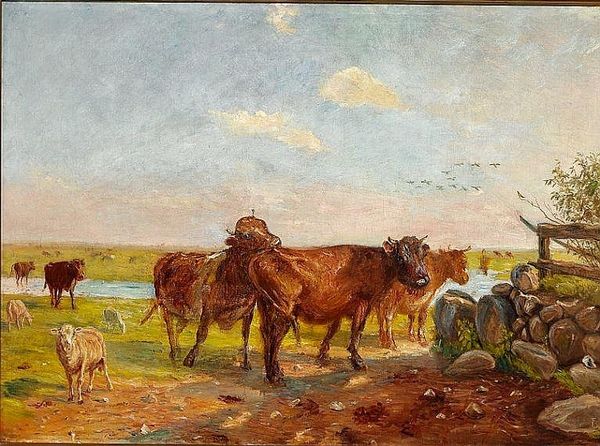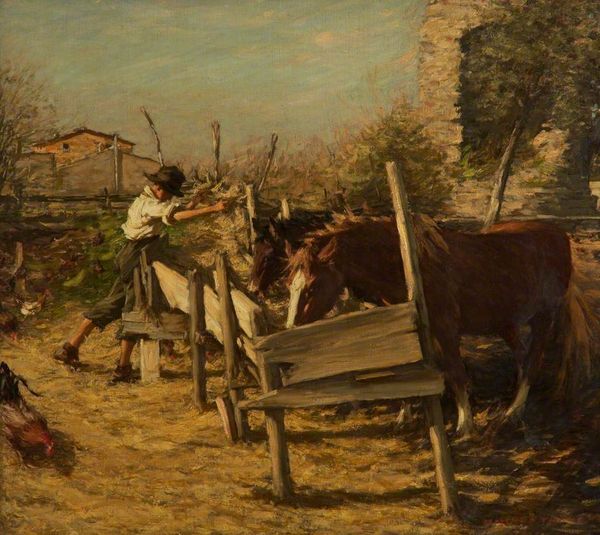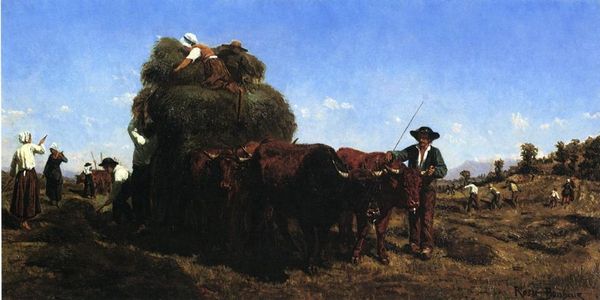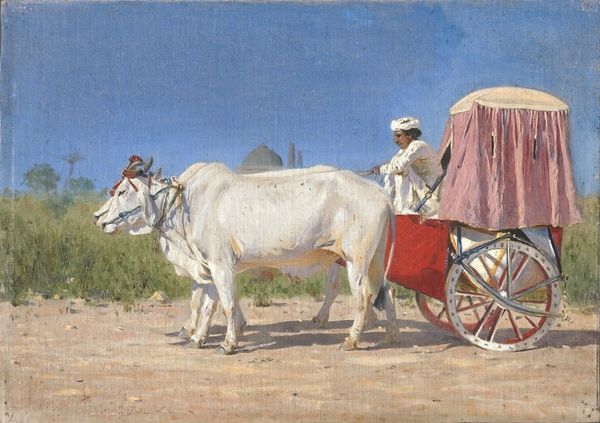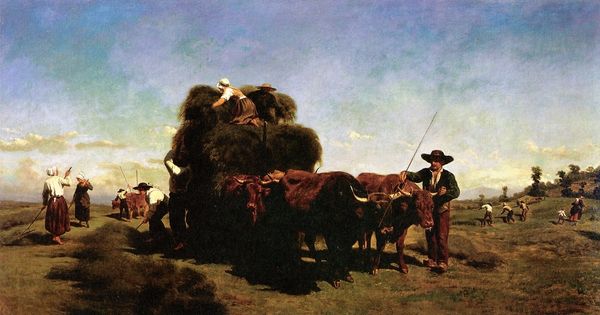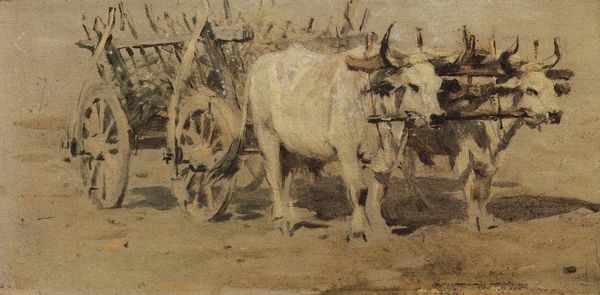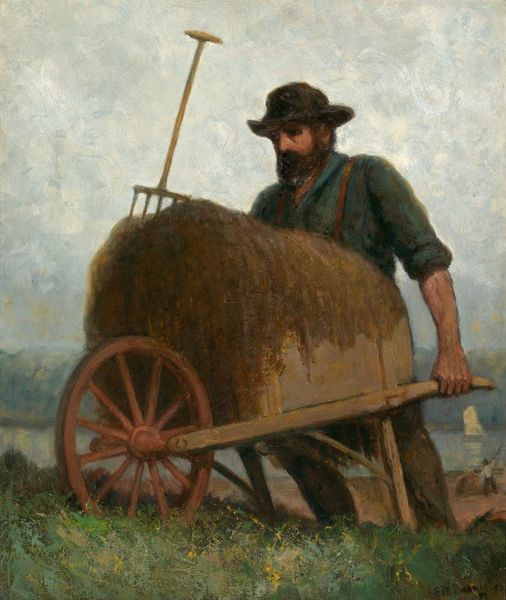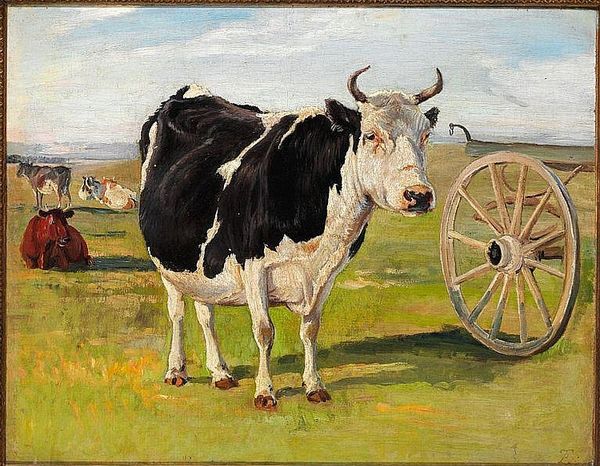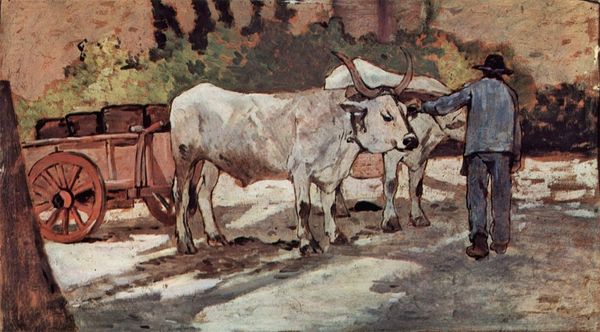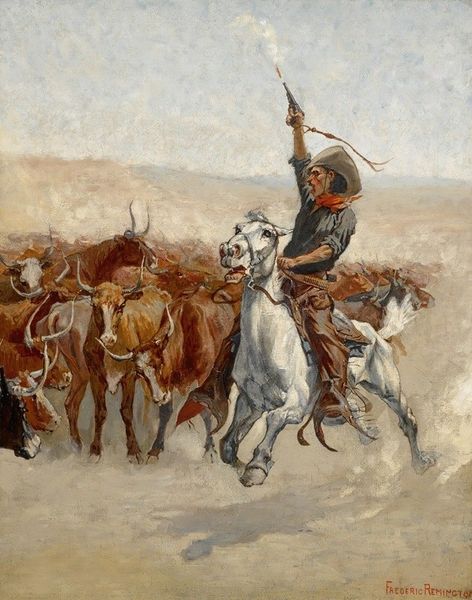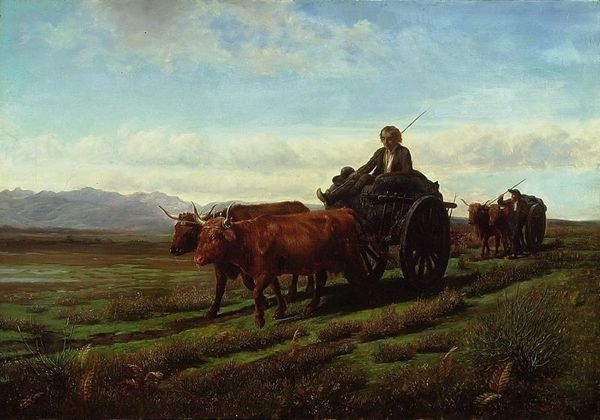
painting, oil-paint
#
painting
#
oil-paint
#
landscape
#
oil painting
#
genre-painting
#
realism
Copyright: Public domain
Curator: Welcome. Today, we’re looking at "Carro de Bois," an oil painting, created by Antόnio de Carvalho da Silva Porto. Editor: It’s rather muted, isn’t it? And somewhat stark. A pair of oxen, yoked and decorated, pulling a cart laden with timber, I assume? There's something about their patient stillness that speaks volumes. Curator: Absolutely. This work reflects the burgeoning Realism movement of the late 19th century, which saw a departure from romanticized portrayals towards depictions of everyday life. Silva Porto often showcased rural Portuguese life, contributing to a broader cultural discourse. The genre-painting gives dignity to labor. Editor: Yes, a genre painting, depicting the workaday realities. But also, let’s think about what that cart represents – resources extracted from the land, labour power, maybe even some level of imposed colonial dynamics? I can’t help but wonder who profited most from this scene. And what was taken to produce them? Curator: That's an important question to raise. Art of this period can reflect complex relationships of power, which become amplified if we explore that socioeconomic history. The painting can be read as part of nation-building endeavors. Editor: Precisely! This sort of picturesque ruralism serves specific ideological needs, usually benefiting certain urban and/or governing groups while glossing over more difficult socioeconomic realities for the depicted class and subjects. I mean, consider the oxen. Curator: By examining it critically through an intersectional lens, we gain a much fuller understanding of its societal influences and ramifications. I wonder about his intentions, did he think of them at the time? We need to avoid a simple view that says the past did not consider current cultural references. Editor: I suppose, while we cannot know his precise intent, we can still bring critical inquiry to what the painting implicitly represents. I look for it in contemporary discourse, what relevance does art such this has nowadays. Curator: I appreciate the contemporary critical inquiry. What has been established can still evolve with novel discourse. The oxen evoke both nostalgia for a slower way of life and critical reflections about how power continues to operate. Editor: Agreed. Thanks for that analysis. This piece really gets the analytical juices flowing!
Comments
No comments
Be the first to comment and join the conversation on the ultimate creative platform.

